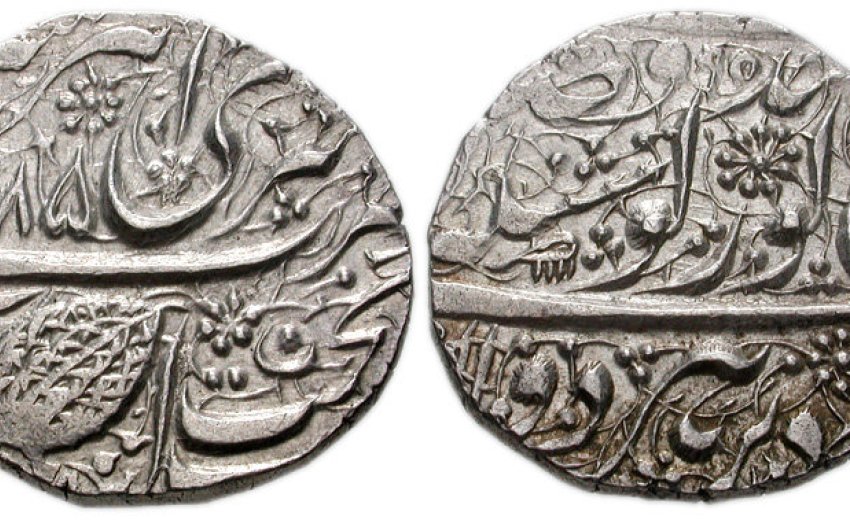The iconic Sikh general, Baba Banda Singh Bahadur, minted the first official Sikh currency in the late 17th century. Subsequent rulers of Punjab continued using them, with Maharaja Ranjit Singh further solidifying their prominence during his reign and laying the foundation of the Sikh Empire. Prior to the era of Baba Banda Singh Bahadur, coins were commonly used in Punjab, not as a form of currency, but rather as tokens of reverence to the Sikh Gurus.
Coins by Baba Banda Singh Bahadur
In the early 18th century, between 1708 and 1715 A.D., Baba Banda Singh Bahadur marked a significant moment in Sikh history by introducing the first Sikh coins. These coins featured the names of the first guru, Guru Nanak Dev Ji, and the tenth guru, Guru Gobind Singh Ji, along with the dates of their minting. Over time, hymns from The Guru Granth Sahib, the holy scripture of Sikhism, were inscribed on these coins.
Notably, the dates on these coins follow the traditional Indian calendar, known as the Bikrami Samvat, which is approximately 57 years ahead of the modern or Roman calendar. This historic initiative by Baba Banda Singh Bahadur not only reflected the cultural and religious identity of Sikhs but also demonstrated the integration of spiritual elements into the economic and daily life of the community.
Coins embossed for Guru Nanak Dev Ji
Maharaja Ranjit Singh, the leader of the Sikh Empire, first minted coins dedicated to Guru Nanak Dev Ji, the first Sikh guru. Unlike other rulers who put their names on coins, his coins were unique because they didn't bear his name. Instead, they featured a Banyan leaf, symbolizing his empire, and were produced in eight locations: Amritsar, Anandgarh, Lahore, Peshawar, Multan, Jammu, and Kashmir. Interestingly, the Sikh currency was more valuable than the French currency during his rule. The coins also displayed various symbols like swords, daggers, or lotus flowers, often representing the province's governor.
After Maharaja Ranjit Singh's death, the British took over the Sikh Empire and replaced these coins with ones honouring Queen Victoria and the British Empire. As a result, the original Sikh coins became very rare. Today, these coins stand as rare relics of Sikh heritage.
*Based on an article by Dinesh Dhiman, published in upkha.org on 14th October 2010

